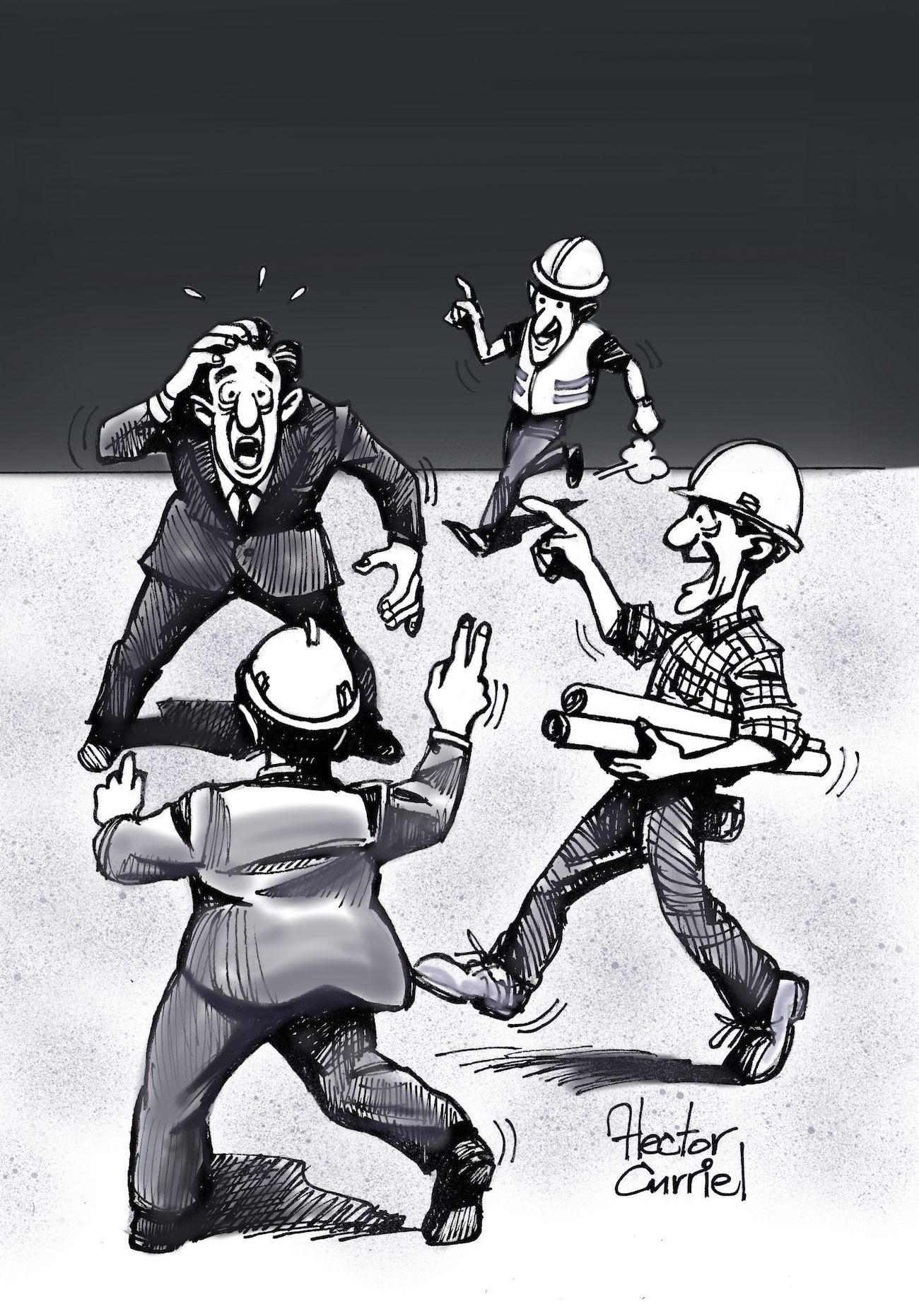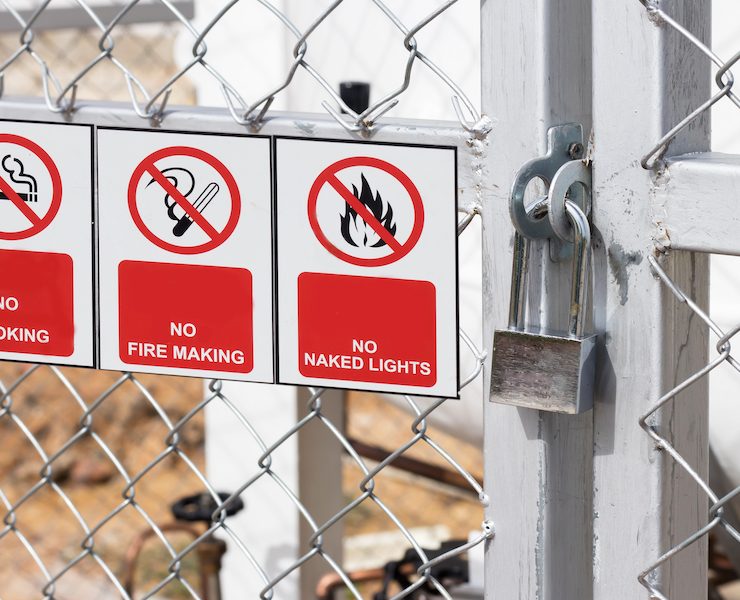Modern Bidding – The Warp Speed Day and its Post Opening Scramble

View the complete article here.
 In the new “Internet of Things” – speed is everything. The latest technology and trained technology-minded teams are key. This is perhaps most true on bid day, an already hectic if not chaotic mad rush to bid opening.
In the new “Internet of Things” – speed is everything. The latest technology and trained technology-minded teams are key. This is perhaps most true on bid day, an already hectic if not chaotic mad rush to bid opening.
Together, the technology of “Apps”, of whole project databases contained on an I phone, and New World Order of “microwaving your Minute Rice”, have created a warp speed day in the bid room. In infrastructure sectors that are fully funded for large project awards, a refresher is in order on the old bid rules, escape hatches from the weak bid, new court cases and new subcontractor leverage points. Hence this brief update.
New Bid Technology – why Bid Rooms now look Like NASA’s Houston Command Control
It’s invariably true that new tools make for better results, and weak tooling make one outdated and at risk for extinction. This is true in the bid room. More and more when visiting a client they show me proudly their new “bid room” that has many billboard sized, high pixel flat screens on all four long walls, a digital clock like showing hours, minutes and seconds in large red numbers as if at Madison Square Garden or Time Square at New Years’ Eve, ticking down the minutes to the 2 pm bid opening. The bid room’s walls encircled with 20 fax machines propped on open shelves looking like mini-tanks for incoming subcontractor bids and invariable exclusions that no one has time to read. Yep, a war room, full of HSB cables, laptops, feverish energy, adrenalin, water bottles, coffee cups and pulse.
I have concluded that today’s bid room, if well-conceived and designed for speed and efficiency, is likely proprietary, a trade secret, since it gives a competitive advantage over others. That advantage is derived through a slow accumulation of shaved off seconds in the transmission phase and the added confidence of better tools and more time, even insanely small increments of time, multiplied by a 7 hour day and twenty members of the estimating team.
Those saves seconds of time over the course of 7 hours before bid time, add to “think time” for the estimating team. If there are 20 estimator, and 30 seconds saved per estimator due to architectural design configuration and technological transmission upgrades, that’s 600 seconds freed up team time. That is a ten minute bid advantage over the chicken-scratch and phone in style of the number 2 low bidder.
The Times they are a Changin’
I point out these technology advances in the bid room first for a reason. This is because reading old court cases about bidding rules is like reading about rules of the road when there were no automobiles, and the rule were about where a horse’s manure deposit was ok, where to tie up your steed, and how to avoid tipping over a horse-drawn load when turning quickly in a muddy street. Great rules for the day, but near obsolete. That is the beauty of the American economy – it runs over old rules quickly with disruptive new innovations in doing things. We are doers, just, with too many lawyers not doing. Just ask Taxi Drivers in any town with Uber or Lyft now the ride of choice, even replacing the traveler’s go to rental Car Company.
The Next 5 bid court cases will break new ground given these new technological gains. The courtroom advantage will be with those who know how to explain to a judge – maybe one that is not tech savvy – just how much the real time process at bid day has changed, sped up even more, and made the bid room its own “World is Flat” example. The bid room is Millennial – and even if you are not. The times are a changin’, no doubt.
Bid Opening of course if fraught with the same heightened excitement of the phrase “and the winner is” declared at the Oscars, and with the equal fear and trepidation of seeing your low bid 30% lower than everyone else and realizing you must have missed something bid. Then you go searching for a math error, hoping you can sell to the owner – maybe – clerical error.
To revisit the basic rule: Judgment errors you are usually stuck with – including math errors in internal quantity surveys – as opposed to transposition or typing errors from internal bid numbers onto bid form than can be easily shown as clerical errors – that your low bid was really higher if we do the true math.
On a QC point – does your estimating team have a QC person assigned to verify internal quantity surveys of linear feet and square footages on lump sum bid items? It should.
Some Recent Cases to Chew On, Starting with Flintco – What Bid Day Speed Does
The impact of “supply and demand” on negotiations over a contract can be seen clearly in subcontractor close outs with a listed subcontractor after a prime contractor is the apparent low bidder. In down or recession economies, many hungry subs are in the wings ready to step in if asked. As a result, the prime contractor is going to have significant leverage to insist on its boilerplate, and often adhesive, one-sided terms for insurance, indemnity, schedule compliance and delay damages, retention, and dispute resolution. The owner will have many low bidders at the prime level all under the engineer’s estimate, desperate to keep its crews working and bank line paid down. It was so in the Great Recession of 2008-2013, which period of time represented largely a “take it or leave it” choice for the listed subcontractor.
The listed sub knew the prime could not, in most states with “Subcontractor Listing Laws”, bid shop without a slap on the wrist from the public agency (usually a 10% penalty). A few subcontractors still had some special leverage – the subcontractor with a long term relationship, or a unique or proprietary skill set – elevator companies come to mind, or Haz Mat contractors. This was because they were needed and hard to replace at equal quality or confidence in follow through on a tough job. But framers, excavators, subcontractors, were vulnerable and had to take the “rat meat” subcontract terms being offered by the primes.
In an overcooked economy or in strong sector growth, primes and subs are turning down work, their backlog is full and there are not enough trained workforce to grow team. Demand outstrips supply. In that case, Adam Smith taught that suppliers could be choosy. While Adam Smith also taught that over time, more subs would appear to take advantage of profits from undersupply relative to demand for services, it is not so where many younger folks eschew the engineering trades for high tech or other pursuits, and it’s hard to attract new workers interested in years of good benefits getting up at 4 am in faraway states on a project.
Therefore, it will continue during the growing economy that subs can walk away from the table with little or no economic impact, if the prime’s terms are too one-sided. And that is exactly what is happening. Supply will not grow to rebalance with demand. And this is also why many prime contractors are now resorting to “Master Agreements” to “lock in” subs to their boilerplate in advance, job to job, to minimize the impact of “supply and demand” directions that favor those offering services – subs – when there is more work available that companies to do the work.
The recent California decision, Flintco Pacific, Inc. v. TEC Management Consultants, Inc. (2016) 1 CA 5th 727, handed subcontractors a potentially powerful legal tool to go hand in hand with their increased economic leverage of being able to turn down work if the prime’s offered subcontract bargain is too steep. Flintco recited the prime contractor’s chaotic bid day dilemma of not being able to read the incoming, same-day subcontractor quotes, beyond price – ignoring the lengthy exclusions – and announced, “Tough – Too bad, so sad.” The case imposed back the old “mirror image” legal rule to contract offer and acceptance – that when a sub makes a bid, that is an offer, and if the prime then presents a form subcontract at material odds with the sub’s bid, it’s a rejection and counter-offer. Meaning, the sub is free to decline the prom date, and date someone else. All this undermines, big time, the rule that is so familiar in competitive bidding that the sub whose bid is relied on for the prime’s low bid, cannot just walk, due to detrimental reliance. At least in my home state, the People’s Republic of California.
Here is a quote directly from Flintco about bid day, about a specialty window supplier’s bid, and its chaos will sound very familiar:
Flintco’s project manager, explained that in his experience, bid day is “usually chaotic” because of the sheer volume of paperwork and so it is impossible to negotiate the terms and conditions in a subcontractor’s bid that day. Conflicts between bid conditions and contracts are normally resolved and specific terms and conditions are negotiated only after the project contract is awarded. Stump, Washburn, and Frantz testified that it is standard practice for subcontractors to include an extensive number of terms and conditions in their bids. Specific terms and conditions in a subcontractor’s bid are not relevant to the scope of work, are typically boilerplate and conflict with Flintco’s sub- and prime- contracts. Thus on bid day, Flintco disregards all terms and conditions of a subcontractor’s bid except for scope of work, price, length of time the bid would remain open, and bonding. The stated “purpose of reviewing the terms and conditions in a subcontractor’s bid prior to the bid deadline is to find ‘red flags.’ The issue, according to Mr. Stump, is whether ‘we are going to be fighting about something.’ ” Hence, Washburn agreed it was fair to say that an unusual term or condition might escape his attention because of the cursory nature of his review of bids on bid day.
Frantz [of Flintco]did not look at TEC’s terms until after TEC was listed in Flintco’s bid. No one at Flintco discussed TEC’s requirement for a 35 percent deposit on bid day. Stump [of Flintco] may have looked at the conditions of TEC’s bid before trial.
In Flintco, the sub would not budge on its exclusions, or budged a bit, the prime missed the stated 15-day deadline in the bid before it expired before even sending the standard subcontract to sign, and the prime refused to back off anywhere. The Court found the subcontractor not obligated to contract, despite being listed in the prime’s bid, and declined to award the prime damages for the difference in price between the listed bid and the replacement supplier’s $350,000 higher price. Lesson learned – compromise, or lose. Negotiate in meaningful ways, or the judge will not find you to be acting in a reasonable business fashion, and will knock you down, hard. Horse Trade terms, and do not get into the “take it or leave it” mentality – it won’t work anymore.
What Next?
For general contractors I represent, I recommend a counter-measure. I recommend a detailed sheet in the bid solicitation sent to prospective subs and suppliers, outlining the standard subcontract on the prime’s website, and some minimum clauses – your bid must adopt the general conditions of the public agency’s bid, accept indemnity, insurance, quality, schedule and delay damage obligations equal to the call of the specifications, and that it be open for 30 days after bid opening, or your bid is non-responsive.
Does this work? Sort of. It’s an arrow in a prime’s quiver to counter-act the ability of a sub to walk with buried, unread and one-sided exclusions that the general just could not read on bid day. It has an impact, and sets a basic rule – if you bid the job, you must comply with the specifications, including the general conditions. I call this the “Three Musketeers” Clause – all for one, one for all on the Contractor Team – the subs share the same risk within scope as the prime contractor, and must for their bids to be responsive.
Another thought is to meet with selective key sub bidders, face to face, at least a week before a key bid, where the sub’s scope is critical to the project or schedule, to exchange expectations, and pre-negotiate these exclusions. Does that work? Yep, sort of. Mainly, in a busy economy and with actual face-to-face meetings sort of passé, it does not happen due to lack of time, but let’s not avoid it for lack of trying.
Ok, the Core Rules of Bidding, Bid Errors, Bid Release, and Bid Protests
I am reciting these rules as bullets:
- A bid must be responsive, meaning answer the bid fully and exactly. A missing signature, incomplete fill out, makes it non-responsive and subject to rejection.
- A bid item that is not complete or at variance, if immaterial, can be waived or not by the public agency. What is immaterial is defined as an error that did not give the bidder a competitive advantage. A competitive advantage is defined as a variance that would allow the bidder to “look see” the bid after opening, and withdraw its bid (usually because too low against the others) without risk to the 10% bid bond. This is often where the legal arguments go in formal bid protests and bid protest case law – could the bidder withdraw, and not expose the bid bond? If so, the error is immaterial. If immaterial, the owner can accept or reject the bid, or reject all bids. In my experience, in cases of small delta’s between bidders, of 1% or less, and if the low bid is under the engineer’s estimate and project budget, the agency is more inclined to reject the less than perfect low bid. Conversely, if the second low bidder is significantly higher, the duty of the agency to taxpayers and constitutes leads the agency to waive the irregularity as immaterial. As it should be.
- A clerical error, such as a math error that can be shown with ease, allows a bidder to withdraw. However that must be done immediately, usually within 2 to 5 days. This again requires a factual analysis. This again is handicapped by the delta in price to the next lowest bidder. An error where the second bidder’s price is close is more likely to be allowed as clerical and the bid allowed to be withdrawn, than if the dollar spread to the number two bid is large.
- The time frames for bid protests are also very short and written into the specifications, usually 2 to 5 days. These usually result in a response from the low bidder, and an agency staff report framed by staff and legal counsel, a public hearing and an opportunity to sway votes of the City Council or other agency. These can be unpredictable. Always show up. You never know. And sometimes bidder number 3 gets into the act, and protests both bids 1 and 2 as non-responsive.
- Another, related but distinct concept is non-responsible. A bidder is non-responsible if, for example, it does not have the right licenses or is unlicensed, or has been disbarred, or found to have a demonstrated record of unsafe projects and OSHA citations. This again is factual in most cases.
- Where there is a Subcontractor Listing Law, subcontractors whose value is equal to a minimum percentage of the prime’s bid (often 0.5%) have to be listed. Once listed, to prevent bid shopping and its risk of shoddy work, the prime may not replace that listed subcontractor absent a formal hearing with the agency on notice to the listed subcontractor. This is why subs have some leverage when listed, and also why subs have a duty to hold open their bids, price and exclusions submitted, usually for 30 days so the public agency can award the prime contract after public notice and hearing, and the prime can then send a subcontract form for signature once the prime is assured of having a prime contract.
- The fact some subs now shorten the expiration of a hard public subcontract to say 15 days – as in Flintco – creates real structural problems in the Subcontractor Listing arena. This is because it takes most public agencies around 30 to 45 days to award the prime contract. In the meantime, the apparent low bidder prime will not want to sign a subcontract and bind itself to pay a sub until it has a prime contract. That is not going to happen in 15 days. In my view, 15-day expiration to a subcontractor’s bid on a hard public bid project, is unreasonable, since the sub who is bidding must contemplate in bidding to the close out turnaround of the public agency. This was not dealt with in Flintco by the court, and it can be an unfair “gotcha.” The reason it wasn’t, was in part that the prime waited very long to even respond with a subcontract, after the agency award. But keep this in mind.
- If a listing of a subcontractor is in error, most specifications call for calling the error out within 2 days after bid, again so the agency, two affected subcontractors and other prime bidders can react. The outcome could mean a lot of things – clerical error and the price or bid increases past the number 2 bidder, or arguments by the subcontractors as to the right to be listed, and protests over both non-responsiveness and being non-responsible or a sloppy bidder.
- When a protest is rejected or accepted, there are very short time fuses and limited remedies to go to court and to challenge the administrative agency rulings, and usually on a very deferential standard of “abuse of discretion” – which means, “you got to be kidding me, what were you thinking?” A court will not reweigh facts or second guess the Executive Branch on contracting decisions usually. So the bid protest hearing and briefing is usually all there is.
- Specific requirements for Veterans Business Enterprises and other Disadvantaged Business Enterprise (DBE) participation are complex as the paperwork rules, registration and timing – know these as they are another place where bid protests occur. Federal Funding strings are often at work in such projects, and the local agency may want to go one way for the taxpayer, but go another way to ensure federal funding is protected.
Conclusion
Contractors “bet the company” when they bid. I am constantly amazed at the risk levels most contractor-owners must get used to, since they are not just betting the company, but the personal assets of their owners through their bond credit personal guarantees. They must go “all in” personally and not just on company assets, with a subcontractor team that they do not know and whose bids are lower than everyone else’s – that’s why you got the job.
Bidding is therefore nearly always an “all in” poker game of the highest of stakes. Surprisingly, the risk levels of large bids are not appreciated at times. If they were, all bid rooms would look like Houston’s NASA command central. That time has now come.
I am sorry to report, but court cases and fancy legal rulings on bidding quoted by lawyers never protected anyone in the bid room very much, and that is not going to change. In fact, it’s going to get worse with the “Uber/Amazon/Tesla/I Phone/Twitter/Instagram disrupter economy” racing at twice the pace of legal know-how and antiquated, 19th Century Court processes than remain largely molasses in speed, and excessively costly and uncertain. So, as in Alaska, if it happens to you in bidding, it’s probably your fault. Plan and prepare accordingly, one bid at a time.
View the complete article here.
What are the key considerations when choosing between shallow and deep foundations for a construction project?
Key considerations include soil type and bearing capacity, structural load requirements, site constraints and accessibility, environmental considerations, and budget and time constraints.
How has modern bid technology transformed the bidding process in construction, and what challenges do contractors face on bid day?
Modern bid technology, including apps and digital databases, has accelerated bid day processes, presenting challenges such as the need for efficient bid room design, quick transmission of bids, and the importance of negotiating subcontractor terms post-bid.

















